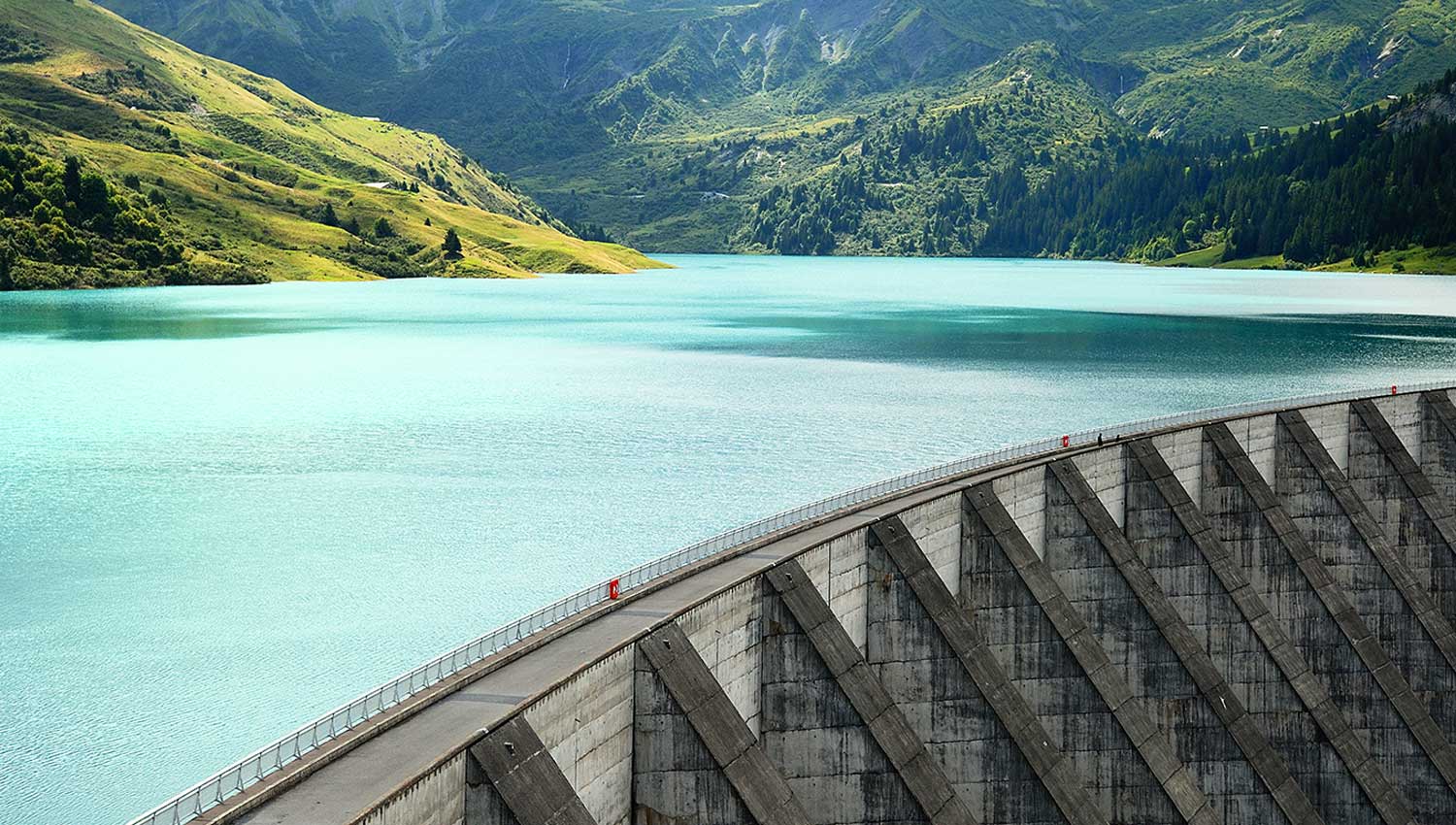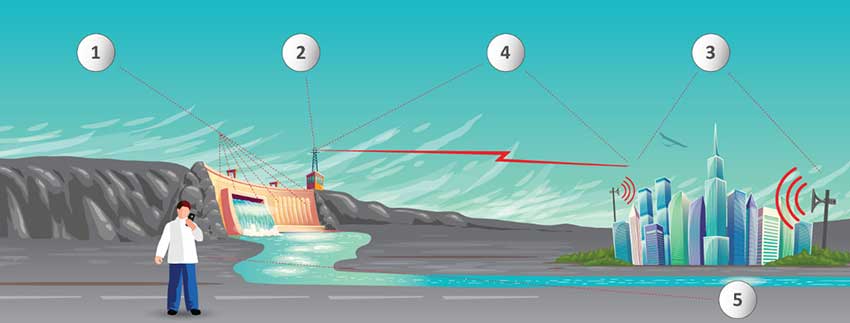
Safety of Dams and their Surroundings
Dams and hydroelectric powers stations fulfil several essential functions: managing potable water supplies, controlling and preventing floods, generating electricity and supplying water to industrial and agricultural consumers. However, there are many risks involved in their operations.
Why dam safety is so important
A dam failure can result in unleashing enormous amounts of water to spill into its surrounding area, having fatal consequences to the population living close to the dam and to those in the direction of the floodwater wave. One of the measures to be obligatorily taken by the waterworks operator to protect the people living in the surrounding areas is to determine the area that could be hit/affected by the discharge-wave front within an hour after a dam failure happens, and an hour later. Based on such calculations, autonomous monitoring, warning and notification systems are designed and built for the areas where the discharge-wave front passes within one hour of the occurrence of an emergency on a water structure.
Increase in dam safety
Autonomous safety systems consist of three separate components:
- A warning system, consisting of sirens and control stations
- A communications system, consisting of devices delivering text or voice messages
- A monitoring system, containing a variety of sensors and ultrasonic probes
Every autonomous safety system must be variable and arranged in the way that the data acquired from the monitoring system is independently processed and forwarded to a control centre. It is a combination of measurement, control and regulation devices. The individual components within the system work independently according to pre-programmed scenarios. At the same time, they closely co-operate (for example, send analogue or binary signals or exchange control commands) and communicate with each other at real-time.
The main task of the control system is to ensure that warning and notification is delivered to the population in time. If the system evaluates the signals coming from the monitoring system as critical, the data is immediately displayed, an acoustic steady-tone signal sounded for 10 seconds and then repeated at regular 20-second intervals until the signalisation device is turned off.
The permanent service office immediately verifies the situation and sets off or calls off the alarm. If the responsible officers do not act accordingly and respond to the signalisation within 5 minutes of its detection, the control system automatically activates the relevant warning and notification devices.
The above system meets the legislative requirements currently in effect in the Slovak Republic. Each country may have different law; therefore, the variability of any safety system is of utmost importance. Telegrafia’s monitoring, warning and notification systems are scalable, variable, flexible, and all of them can be customised to suit your needs. Please do not hesitate to contact us.

The article was written by
Jan Suvak
Jan has been working for Telegrafia for over eight years. He started as a sales representative for warning systems in the Slovak and Czech Republics. He also participated in managing small projects at that time. He has been through a number of communications, sales, and management training courses ever since, thanks to which he is now working as the international business team leader. Selling is his hobby not just work, so, apart from managing his team, he sells warning systems in the Czech Republic and Arabic-speaking countries. He is keen on sport and hiking, and his greatest passion is cycling.

